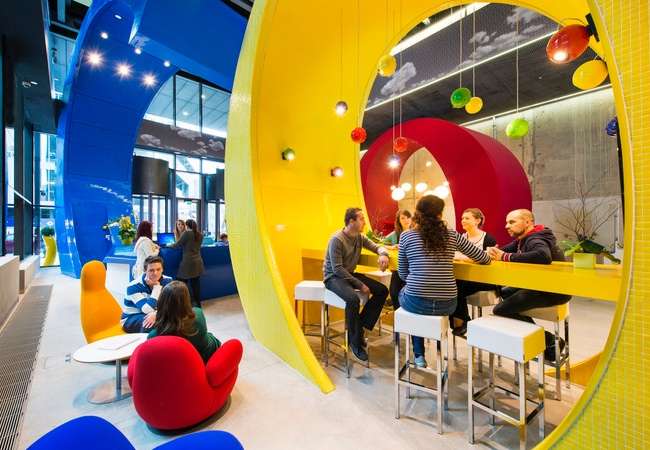Transform Your Business: How Strategic Interior Design Drives Business Success
Hello! Today, we will explore the fascinating world of strategic interior design and its impact on business success. Far from being just an aesthetic concern, well-planned and executed interior design can be a powerful tool to increase productivity, improve employee satisfaction, attract more customers, and ultimately boost a company’s profitability. Join us on this journey to discover how strategic interior design can become a source of business wealth.
Strategic Interior Design: A Game-Changing Tool for Business Success
Strategic interior design is one of the best tools a business owner can have. For us, interior design is never an end in itself but a means to achieve the final goal. Pursuing purely aesthetic ends would be a mistake, as it would only satisfy our egos as designers or, at best, the business owner’s ego.
The Concept of Strategic Interior Design
Strategic interior design refers to the planning and designing of interior spaces with the goal of maximizing functionality, comfort, and aesthetics, always aligned with the company’s commercial objectives. This approach not only creates visually pleasing spaces but also optimizes the environment to improve the efficiency and well-being of the people who use it.
Benefits of Strategic Interior Design for Businesses
1. Improved Productivity
The design of a workspace directly impacts employee productivity. A well-designed environment can:
- Reduce stress: Appropriate colors, good lighting, and green spaces contribute to a relaxing atmosphere.
- Increase concentration: Proper furniture layout and noise reduction allow employees to better focus on their tasks.
- Foster collaboration: Well-designed open spaces and common areas promote interaction and teamwork.
2. Attraction for Customers and Talent
A well-designed space can be a powerful calling card to attract new customers and talent. First impressions count, and a well-maintained and professional environment conveys seriousness, success, and attention to detail. Potential employees will also be drawn to work in a place that values their well-being and comfort.
3. Improved Employee Well-Being
Good design not only focuses on productivity but also on well-being. Spaces that incorporate natural light, rest areas, and ergonomic furniture contribute to employees’ physical and mental health. A healthy and happy staff is more efficient and has lower absenteeism and turnover rates.
4. Space Optimization and Cost Reduction
Strategic interior design allows for better use of available space. This can reduce the need to rent additional areas or redesign spaces to make them more functional and efficient. Moreover, sustainable and conscious design can lower operating costs through the use of recycled materials and energy-efficient solutions.
True Satisfaction Comes from Selling
True satisfaction comes from selling, in the broadest sense. For offices, it means increasing employee productivity and contributing to their happiness and comfort. The key is to understand the consumer’s needs and implement solutions in the commercial space.
Examples of Strategic Interior Design in Practice
Many companies have adopted strategic interior design and seen positive results. Some notable examples include:
- Google: Their offices worldwide are known for their innovative design that promotes creativity and employee well-being.

- Apple: Their stores exemplify how design can influence customer experience and brand value.

- Noma (Copenhagen): Repeatedly awarded as the best restaurant in the world, Noma offers a unique culinary experience that begins the moment customers walk through the door. By creating an environment that is aesthetically pleasing, functional, and aligned with the restaurant’s philosophy, Noma demonstrates how strategic interior design can be a powerful tool in the restaurant industry. This approach enhances the customer experience and significantly contributes to the restaurant’s commercial success.

Implementing Strategic Interior Design
To implement a strategic interior design project, follow these steps:
- Needs Analysis: Identify the needs and objectives of the company and its employees.
- Customized Design: Create a design that reflects the company’s culture and promotes strategic objectives.
- Material Selection: Choose materials and furniture that are functional, sustainable, and aesthetically pleasing.
- Execution and Evaluation: Implement the design and conduct periodic evaluations to ensure the objectives are being met.
Why Business Owners Need Us
Business owners need us to transform their spaces into strategic tools that drive their objectives and meet their clients’ needs. Strategic interior design is not an expense but an investment that can bring multiple benefits to a company. From improving employee productivity and well-being to attracting more customers and talent, good interior design can be a significant source of business wealth. So, the next time you think about redesigning your workspace, remember that a strategic approach can make the difference between success and stagnation.

